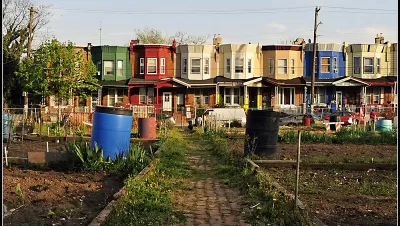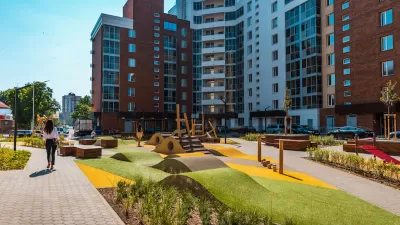Applying trauma-informed principles, reducing social isolation, and encouraging active living—how housing can be designed to promote good health.

A little more than a year ago, the COVID-19 outbreak was declared a global pandemic and government officials across the country ordered residents to shelter in their homes. While there’s been significant progress in the fight against the coronavirus with the development of advanced health treatments and the growing distribution of COVID-19 vaccines, many people are still spending most of their time indoors. However, data from the National Center for Healthy Housing shows that homes are one of the most dangerous places to be. Nearly 40 percent of residences have at least one health or safety hazard, and these issues tend to be costly to repair.
Among affordable housing advocates and health professionals, it’s commonly understood that removing health hazards like mold or lead can positively affect a residents’ health and well-being, but there are other, less familiar ways in which affordable housing can be designed to promote good health.
Shaping Healthy Affordable Housing
Dr. Lynne Dearborn, an architectural researcher and professor of architectural design at the University of Illinois at Urbana-Champaign, studies how housing and residential environments affect health. Dearborn and Dr. Sherry Ahrentzen of the University of Florida recently studied the extent that Low Income Housing Tax Credits (LIHTC)—the largest source of funding for affordable housing—helps shape healthy homes. They did this by reviewing Qualified Allocation Plans, or QAPs, which states develop annually to establish eligibility for receiving LIHTC funds.
Dearborn and Ahrentzen found that most states offer incentives to developers who site affordable housing in neighborhoods that have amenities to improve healthy living, but rarely do they require it.
Also, while most states have a least one criterion for addressing indoor air quality in their respective QAPs, few ...
FULL STORY: Housing Design That Advances Health

Planetizen Federal Action Tracker
A weekly monitor of how Trump’s orders and actions are impacting planners and planning in America.

Congressman Proposes Bill to Rename DC Metro “Trump Train”
The Make Autorail Great Again Act would withhold federal funding to the system until the Washington Metropolitan Area Transit Authority (WMATA), rebrands as the Washington Metropolitan Authority for Greater Access (WMAGA).

The Simple Legislative Tool Transforming Vacant Downtowns
In California, Michigan and Georgia, an easy win is bringing dollars — and delight — back to city centers.

The States Losing Rural Delivery Rooms at an Alarming Pace
In some states, as few as 9% of rural hospitals still deliver babies. As a result, rising pre-term births, no adequate pre-term care and "harrowing" close calls are a growing reality.

The Small South Asian Republic Going all in on EVs
Thanks to one simple policy change less than five years ago, 65% of new cars in this Himalayan country are now electric.

DC Backpedals on Bike Lane Protection, Swaps Barriers for Paint
Citing aesthetic concerns, the city is removing the concrete barriers and flexposts that once separated Arizona Avenue cyclists from motor vehicles.
Urban Design for Planners 1: Software Tools
This six-course series explores essential urban design concepts using open source software and equips planners with the tools they need to participate fully in the urban design process.
Planning for Universal Design
Learn the tools for implementing Universal Design in planning regulations.
Smith Gee Studio
City of Charlotte
City of Camden Redevelopment Agency
City of Astoria
Transportation Research & Education Center (TREC) at Portland State University
US High Speed Rail Association
City of Camden Redevelopment Agency
Municipality of Princeton (NJ)





























